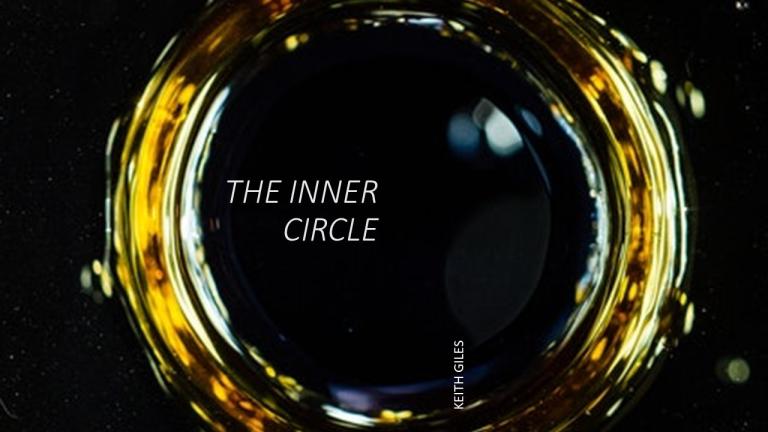
Before we start diving into the actual sayings of Jesus found in the Gospel of Thomas – and we really are doing that in this post…I promise – let’s first take a moment to establish a few important aspects of this Gospel up front.
Why? Because if we don’t, then we might misunderstand where the sayings are coming from and make false assumptions about certain phrases and words that will appear frequently in the text.
The first thing we need to understand is that the word “secret” or “hidden” in this Gospel does not refer to something that only a few people have access to. It’s not a reference to something that only a select [or “elect”] few have been given some sort of special revelation about. Rather, it is a reference to the truth within everyone, everywhere, that we must take the time to seek out and uncover if we hope to see reality – God, the Universe, humanity, ourselves – with open eyes.
Think of it this way: Everyone has a liver, but if no one ever showed you what a liver was, you’d have no idea that you – and everyone else – had one inside of them. The Kingdom of God is like that, according to the Gospel of Thomas. We all have the same Kingdom of God within; it’s hidden as long as we are unaware of it. But, once we realize that this is true, we are now capable of seeing and living in that Kingdom in the here and now.
So, the reality of God’s Kingdom is “hidden” but it’s not “secret.” At least, not in the sense that anyone is trying to keep this truth from you. If anything, this is an essential truth that everyone needs to realize for themselves, not a secret revelation that only a few holy disciples have access to.
This is why so many of the sayings of Jesus in Thomas’s Gospel are written as if they are a cryptic code to unravel. Because when we hear these riddles spoken [or read them in the text], our minds cannot help but try to make sense of them. Only those who are truly hungry and thirsty for the Kingdom will wrestle with them until they discover the meaning.
Another reason we can say that truth is “hidden” in this Gospel in this way is because the Kingdom of God is hidden in our own minds. Therefore, the only way to uncover it is to search for it within ourselves. The sayings of Jesus in Thomas compel us to work these things out in our minds, which is where the truth already is.
As we’ve already established, the rubric for almost every single saying in Thomas is rooted in a non-dualistic framework: There is no “Us” and “Them.” There is only “Us.” Everything is in Christ and Christ is in all things, and all people. We are not separated from God, or from one another. We are all one Christ Jesus. Therefore, whenever we apply this reality to what we read in Thomas’s Gospel, we’ll find the key to understanding what it means.
This perspective makes the title of this blog platform a little ironic, doesn’t it? When we say we’re part of the Inner Circle, we’re saying that we’re members of a group that comes together to talk about how there is no “In here” or “Out there.” There is only “Here.”
The Inner Circle, then, becomes the place where we realize that there is only one circle and we’re all inside of it because there’s nothing outside of us. Our unity with Christ erases all forms of separation.
More on this as we progress.
But, the words “hidden” or “secret” should be understood as references to the realization that we are all one in Christ and with Christ. This truth is often alluded to in parables and allegories where Jesus compares it to a treasure hidden in a field, or a pinch of leaven concealed in a lump of dough, etc. What is hidden is the truth that we are all one, and this truth is hidden in our minds. By speaking in these terms, Jesus points us to the answer which is already within. We just need to seek it, find it, and accept it.
This means that, contrary to what we have been told almost all of our Evangelical Christian lives, the Truth is not “out there” somewhere. It is – and always has been – “in here.”
In other words, Truth is not something we need to look for in a book, or a preacher, or a guru, or a conference. Truth is not external to ourselves. It is not an answer written in a book. It is not a code we need to crack. Not at all.
Instead, Truth is within us. If we search for Truth we need to look within. That’s where it has always been, and that is where it will always abide.
So, are you ready to examine the sayings in the Gospel of Thomas? I hope so.
Let’s start with the Prologue and Saying 1, shall we?
The Prologue says:
“These are the hidden sayings that the living Jesus spoke and that Didymos Judas Thomas wrote down.”
As we’ve already explained, when Thomas says these are the hidden sayings, he doesn’t mean that only a select few chosen ones are privy to their meanings. He is speaking of sayings that reveal the Truth that is already within all of us. These sayings are “hidden” but not “secret.”
He also makes a point of mentioning that these sayings were spoken by “the living Jesus” and this is important for several reasons.
First, because the New Testament will often attribute sayings to the risen Jesus – the Jesus who rose from the dead, or even the Jesus who had already ascended into heaven and who spoke as a vision which only certain people could hear or see. For example, when Jesus speaks to the Apostle Paul for the first time on the road to Damascus, this is not the “living Jesus” that Thomas refers to.
Not that Jesus isn’t alive in the appearance to Paul, but that the phrase, as Thomas is using it here, is a reference to things Jesus said prior to being crucified on a Roman cross.
The sayings of Jesus in John’s Revelation epistle would be another example of post-crucifixion sayings of Jesus, which Thomas is wanting to contrast his recorded sayings here with.
Why is this important? Because I think Thomas wants us to know that he is sharing with us the sayings of Jesus the he actually heard Jesus make when he was physically in the presence of Jesus as he walked, and talked, and taught as a First Century traveling Rabbi in Judea.
In other words, Thomas wants us to know that he did not hear Jesus speak these things to him in a dream, or in a vision, or after the fact. These sayings in Thomas – at least according to the author of this collection – are what Jesus said when he was alive and physically talking to his disciples; which included Thomas.
The point is to at least project some authenticity to the text itself. We might paraphrase this as something like: “I actually heard Jesus say these things with my own ears and I wrote them all down so you would know what he said.”
Another thing to point out is that the Prologue itself doesn’t seem to be written by Thomas but by someone who wants to let us know that the sayings we are about to read were complied by Thomas.
How do I know that? Because it would be strange for someone to write down the sayings of Jesus, and then write about themselves in the Third Person. Why not just say, “These are the sayings of Jesus as recorded by me, the disciple Thomas.”
For example, whenever Paul writes an epistle, he always begins by identifying himself at the very beginning of the letter. Of course, this is not a letter to anyone, but the principle still applies. People in the First Century tended to identify themselves at the top of the document so their readers would know who they were.
Interestingly, we see the opposite is true in the four New Testament Gospels where only Luke begins by speaking of himself in the first person, and the other 3 authors never once identify themselves. We only know the names of the authors by the titles of their Gospels, and these attributions were passed down through early Christian tradition, not found in the text themselves.
So, when the Prologue tells us that what we are about to read are the sayings of Jesus that the disciple Thomas wrote down, we should assume that what Thomas recorded were the sayings and that someone else added the introduction to let us know where these sayings came from.
Now, on to Saying 1:
“And he said, “Whoever finds the interpretation of these sayings will not taste death.”
The problem with this saying, as many scholars point out, is that it’s very difficult to know whether or not this is actually “Saying 1” or if it should be considered as part of the Prologue.
Because, since we can safely assume that whoever wrote the Prologue was not Thomas, it’s also likely that this same person is quoting Thomas – not Jesus – here.
If we read it this way – and there are several scholars who do – then, the “he said” here is referring to Thomas, and the author of the Prologue is trying to add another layer of authenticity to the collection by informing us that he knew Thomas personally and that when Thomas gave him this collection of sayings, he said what is recorded above: “Whoever finds the interpretation of these sayings will not taste death.”
So, perhaps we should consider this statement as Thomas’s only contribution to the text and as a clue for us that finding “the interpretation of these sayings” is extremely important.
The promise given to us is that the one who does find the key to unlocking these sayings of Jesus found here “will not taste death.”
As with everything else in the Gospel of Thomas, we cannot take such statements literally. To do so is to miss the hidden meaning embedded in each saying. Rather, we should try to understand this promise metaphorically, or allegorically.
Obviously, everyone will experience a physical death. That’s not going to change if you read and understand this text. But, what Thomas wants us to know is that, once we realize that there is no such thing as separation from God or from one another, we will also understand that death is an illusion. This means that, when our bodies die, we will continue to be connected with and at one with Christ and all things, just as we are now. Maybe even more so because the illusion of separation – perpetuated by the separateness of our physical bodies and the perception of duality in our consciousness as expressed by being “alive” or “dead” – will be removed so that we can truly realize our oneness with God and with everyone and everything else.
The more we dig into the sayings of Jesus in this study – and I suppose we really haven’t started that journey just yet – the more we will become aware of this truth within us that we are in Christ, and Christ is in us, and that “we are all filled with the fullness of him who fills everything in every way.” [Eph. 1:23]
I can’t wait to jump into Saying 2 next time, which is most likely the first saying of Jesus that Thomas wrote down for us to examine.
Keith Giles is the author of the 7-part best-selling “Jesus Un” book series from Quoir Publishing. His latest -and final book – in this series, Jesus Unarmed: How The Prince Of Peace Disarms Our Violence is available now. Keith is also the host of Second Cup with Keith [a new solo podcast available now on the Ethos Radio App, for Apple and Android and on Spotify; and the Heretic Happy Hour Podcast [along with co-hosts Matthew Distefano, Dr. Katy Valentine, and Derrick Day], and the new Apostate’s Anonymous podcast with Matthew Distefano. He and his wife, Wendy, currently live in El Paso, TX.













